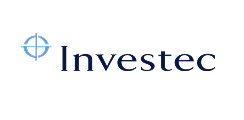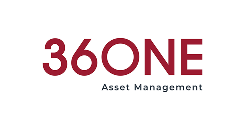THE HIDDEN COSTS OF COMPOUNDING HIGH FEES OVER TIME.
You are probably working hard for your retirement. And investing consistently every month.
If you have been doing that for more than 10 years, you’ll might be surprised at the fees you
have been paying.
Many investors overlook the impact of fees associated with older retirement products. And
many investors have not reviewed the ongoing costs they incur. This article delves into how
they can erode investment returns over time, and provides examples of what a 1% higher
fee can do to your precious retirement savings.
Understanding Retirement Annuities in South Africa
Retirement annuities are long-term savings products designed to provide income during
retirement. They offer tax advantages, as contributions are tax-deductible up to certain limits,
and investment growth is tax-free. However, the fees associated with these products can
vary significantly, impacting the overall returns.
If you want to see what 1% extra fees could cost your retirement and what just a 1% better
return could mean to your retirement check out this calculator link.
Types of Fees Associated with Retirement Annuities
- Management Fees: These are fees charged by the fund manager for managing the
investment. They are typically expressed as a percentage of the assets under management
(AUM). - Initial Fees: Often charged when you invest in the annuity, these can be a significant
upfront cost and may reduce the initial amount invested. - Ongoing Administration Fees: These fees cover the administrative costs of managing
the annuity, including record-keeping and customer service. - Performance Fees: Some products charge additional fees based on the performance of
the investments, which can further erode returns. - Surrender Fees: If you decide to withdraw funds from your RA before retirement age, you
may incur surrender fees, which can be substantial.
The Historical Context of High Fees
Retirement annuities sold 10 to 20 years ago often came with high initial charges and
ongoing fees. Many investors may not have revisited their policies to see how these fees
affect their current investment returns. In the past, it was common for RAs to have total fees
exceeding 3 – 4% annually, which is considered high by today’s standards.
The Impact of Fees on Investment Returns
To understand how fees can negatively impact your retirement savings, it’s essential to
grasp the concept of compounding. Compounding works by allowing your investments to
earn returns on both the principal amount and the accumulated interest over time. When
fees are deducted from your returns, they reduce the amount available for compounding,
leading to significantly lower investment growth.
Example Scenario
Let’s consider an example to illustrate the long-term impact of a 1% increase in fees on
retirement annuities.
Assumptions:
- You invest R100,000 in a retirement annuity.
- You plan to invest for 30 years.
- The expected market return is 7% annually.
- You have two scenarios: one with a 1% fee and another with a 2% fee.
Calculating Future Value With and Without Fees:
First, we calculate the future value of your investment at a 7% return over 30 years.
In summary :
Without Fees: R761,225.51
With 1% Fee: R574,349.11
With 2% Fee: R432,194.16
The Fee Impact
The difference in future value highlights the detrimental effect of higher fees:
The investment with a 1% fee results in R186,876.40 less than if there were no fees.
The investment with a 2% fee results in R329,031.35 less than if there were no fees.
Thus, that additional 1% fee not only reduces your returns but compounds over time, leading
to a significant difference in savings as you approach retirement.
Check out this easy-to-use calculator if you want to see what 1% extra fees could cost your
retirement and what just a 1% better return could mean to your retirement.
The Importance of Reviewing Fees
Many investors are unaware of the fees they are being charged on their retirement annuities.
Those who invested in RAs 10 to 20 years ago may still be subject to high fees that were
more common in the past. It is crucial to review your investment periodically to understand
what you are being charged today.
Assessing Your Retirement Annuity can make a big difference to how well you retire.
Given the significant implications of fees, it is essential to take proactive steps in assessing
your retirement annuity:
- Review Your Policy: Regularly examine your retirement annuity policy to understand the
fees you are paying. Look for statements that detail management fees, administration fees,
and any other charges. - Compare Investment Options: If your current RA has high fees, consider comparing it to
newer products that may offer lower fees and better investment options. The market has
evolved, and there are now many cost-effective RA options available. - Consult a Financial Advisor: A qualified financial advisor can help you navigate the
complexities of retirement annuities and provide guidance on selecting the best products for
your needs. - Stay Informed: Keep abreast of changes in regulations and market offerings. The
retirement savings landscape is continually evolving, and being informed can help you make
better financial decisions.
Strategies to Minimize Investment Fees
Here are some strategies to help you minimize the impact of fees on your retirement annuity
investments: - Choose Low-Cost Products: Seek retirement annuities with lower management fees.
Index funds and ETFs often have lower expense ratios compared to actively managed
funds. - Negotiate Fees: If you are working with a financial advisor, don’t hesitate to negotiate
fees. Some advisors may be willing to lower their charges, especially for larger investments. - Utilize Tax-Advantaged Accounts: Make sure you are maximizing your contributions to
tax-advantaged accounts, as these can enhance your savings potential while minimizing
fees. - Automate Contributions: Setting up automatic contributions can help ensure you remain
disciplined in your savings while allowing you to take advantage of rand-cost averaging. - Avoid Early Withdrawals: Be cautious of early withdrawals, as surrender fees can
significantly reduce your investment.
In Conclusion
Fees associated with retirement annuities in South Africa can have a profound impact on
your long-term savings. Many investors may be unknowingly subject to high fees from
products purchased years ago, eroding their potential retirement income. A seemingly small
1% increase in fees can compound over time, resulting in significant losses that can hinder
your financial security in retirement.
You can quickly see what the impact of fees (and better fund choice) can do for your
retirement by using this simple online calculator.
To secure your financial future, it is essential to regularly review your retirement annuity,
understand the fees involved, and explore lower-cost investment options. By taking proactive
steps to manage fees, you can maximize your retirement savings and ensure that your
investments are working effectively toward your retirement goals.


















